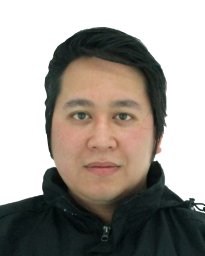Analysis of Chlorophyll-a Variability in the Eastern Indonesian Waters Using Sentinel-3 OLCI from 2020-2021
DOI:
https://doi.org/10.23917/forgeo.v38i1.2361Keywords:
chlorophyll-a, Indonesian through flow, eastern Indonesian waters, Sentinel-3 OLCI, C2RCCAbstract
The Eastern Indonesian waters are significant in influencing the global climate system and oceanic connectivity. However, the Indonesian Through Flow (ITF) facilitates the movement of waters from the Pacific Ocean to the Indian Ocean. This flow vertically mixes water masses in the Eastern regions, leading to the concentration of phytoplankton. In addition, the distribution of phytoplankton, indicative of chlorophyll-a concentration, is influenced by upwelling and downwelling phenomena. Chlorophyll-a, responsible for capturing carbon and producing oxygen in marine ecosystems, is important in regulating climate change. Moreover, oceanographic conditions play a significant role in the dispersion of chlorophyll-a concentration. Therefore, this study adopted ocean colour remote sensing technology to assess chlorophyll-a distribution. Monthly ocean colour data was collected by the multi-temporal Sentinel-3 Ocean and Land Colour Instrument (OLCI). The analysis output included chlorophyll-a concentration associated with currents and the El Nino Southern Oscillation (ENSO). Data processing using the Case-2 Regional Coast Colour (C2RCC) processor resulted in an average chlorophyll-a concentration in the Eastern Indonesian waters ranging from 0.16 to 0.52. The results showed higher chlorophyll-a levels during the southeast monsoon (July to September) and lower levels during the northwest monsoon (January to March).
Downloads
References
Aldiana, N. Z., Sari, L. A., Arsad, S., Pursetyo, K. T., & Cahyoko, Y. (2020). Monitoring of Phytoplankton Abundance and Chlorophyll-a Content in the Estuary of Banjar Kemuning River, Sidoarjo Regency, East Java. Journal of Ecological Engineering, 22(1), 29–35. doi: 10.12911/22998993/128877.
Amankulova, K., Farmonov, N., Omonov, K., Abdurakhimova, M., & Mucsi, L. (2024). Integrating the Sentinel-1, Sentinel-2 and topographic data into soybean yield modelling using machine learning. Advances in Space Research, 73(2024), 4052–4066. doi: 10.1016/j.asr.2024.01.040
An, G., Xing, M., He, B., Liao, C., Huang, X., Shang, J., & Kang, H. (2020). Using Machine Learning for Estima-ting Rice Chlorophyll Content from In Situ Hyperspectral Data. Remote Sensing, 12(18), 1-22. doi: 10.3390/RS12183104.
Bramich, J., Bolch, C. J., & Fischer, A. (2021). Improved red-edge chlorophyll-a detection for Sentinel 2. Ecological Indicators, 120, 106876. doi: 10.1016/j.ecolind.2020.106876.
Doerffer, R. (2010). Sentinel-3 L2 Products And Algorithm Definition Olci L2 ATBD Ocean Co-lour Turbid Water OLCI Level 2 Ocean Colour Turbid Water. GKSS Research Center . https://sentinels.copernicus.eu/web/sentinel/user-guides/sentinel-3-olci/document-library/-/asset_publisher/hkf7sg9Ny1d5/content/sentinel-3-olci-ocean-colour-turbid-water-atbd.
ESA. (2021). Copernicus Sentinel-3 OLCI Land User Handbook. Sentinel Online . https://sentinels.copernicus.eu/web /sentinel/user-guides/sentinel-3-olci/document-library/-/asset_publisher/hkf7sg9Ny1d5/content/id/4598138.
Edwards, T., & Yukio M. (2020). The Indonesian throughflow and its impact on biogeochemistry in the Indone-sian seas. ASEAN Journal on Science and Technology for Development, 37(1), 29-35. doi: 10.29037/ajstd.596.
Gordon, A. L. (2005). Oceanography of the Indonesian Seas and Their Throughflow. Oceanography, 18(4), 14–27. doi : 10.5670/oceanog.2005.01.
Hasanudin, O. M. (1998). Arus Llntas Indonesia (ARLINDO): Vol. XXIII (Issue 2). www.oseanografi.lipi.go.id.
Hatayama, T., Awaji, T., & Akitomo, K. (1996). Tidal currents in the Indonesian Seas and their effect on transport and mixing. Journal of Geophysical Research: Oceans, 101(C5), 12353-12373.
Hermawan, E. (2015). Indeks Monsun Asia-Australia dan Aplikasinya. LIPI Press. https://penerbit.brin.go.id/ press/catalog/view/38/385/5528.
Kulha, N., Ruha L., Väkevä,S., Koponen,S., Viitasalo M., and Virtanen, E. A. (2024). Satellite bathymetry estimation in the optically complex northern Baltic Sea. Estuarine, Coastal and Shelf Science, 298, 108634. doi: 10.1016/j.ecss.2024.108634.
Li, M., Gordon, A. L., Gruenburg, L. K., Wei, J., & Yang, S. (2020). Interannual to decadal response of the Indonesian throughflow vertical profile to Indo‐Pacific forcing. Geophysical Research Letters, 47(11), e2020GL087679. doi: 10.1029/2020GL087679.
Lumban-gaol, J., Tetuko, J., Sumantyo, S., Tambunan, E., and Situmorang, D. (2024). Sea Level Rise , Land Subsidence , and Flood Disaster Vulnerability Assessment : A Case Study in Medan City , Indonesia. Remote Sensing, 16(865), 1–18. doi: 10.3390/rs16050865.
Maro, J. F., Hartoko, A., Anggoro, S., Muskananfola, M. R., & Nugraha, E. (2021). Sea surface temperature and chlorophyll-a concentrations from MODIS satellite data and presence of cetaceans in Savu, Indonesia. AACL Bioflux, 14(3), 1190–1200.
Misgiati, W. I., Murniasih, T., Novriyanti, E., Tarman, K., Safithri, M., Setyaningsih, I., Cahyati, D., Pratama, B. P., & Wirawati, I. (2024). The anticancer and antioxidant potential of local sea cucumber Holothuria edulis, an ecology balancer of Labuan Bajo marine ecosystem. Case Studies in Chemical and Environmental Engineering, 9, 100625. doi: 10.1016/j.cscee.2024.100625.
Neves, V. H., Pace, G., Delegido, J., & Antunes, S. C. (2021). Chlorophyll and suspended solids estimation in Portuguese reservoirs (Aguieira and Alqueva) from Sentinel-2 imagery. Water, 13(18), 2479. doi: 10.3390/w13182479.
Ningrum, D., Zainuri, M., & Widiaratih, R. (2022). Variabilitas Bulanan Klorofil-A Dan Suhu Permukaan Laut pada Perairan Teluk Rembang Dengan Menggunakan Citra Sentinel-3. Indonesian Journal of Ocea-nography, 4(2), 88-96. doi: 10.14710/ijoce.v4i2.14258.
Nurfitri, S. (2021). Physical mechanisms of nutrient supply and controlling factors of phytoplankton growth in the Arafura Sea. Doctoral dissertation, Staats-und Universitätsbibliothek Hamburg Carl von Ossietzky. Retrived From https://ediss.sub.uni-hamburg.de/handle/ediss/9411.
Nugroho, S. A., Dhahiyat, Y., Primadona Purba Program Studi Ilmu Kelautan, N., Perikanan dan Ilmu Kelautan, F., Padjadjaran, U., Raya Bandung-Sumedang Km, J., & Ubr, B. (2013). Variasi sebaran su-hu dan klorofil-a akibat pengaruh Arlindo terhadap distribusi ikan cakalang di Selat Lombok Variation of temperature and chlorophyll-a due toIndonesian throughflow on skipjack distribution in Lombok Strait. Jurmal Ilmu Ilmu Perairan, Pesisir, dan Perikanan. doi: 10.13170/depik.2.2.723.
Purba, N. P., & Khan, A. M. A. (2019). Upwelling session in Indonesia Waters. World News of Natural Sciences. Retrived From www.worldnewsnaturalsciences.com.
Poopipattana, C, Suzuki, M., Kumar, M. F. H. (2024). Prediction of Sunlight- and Salinity-Driven Inactivation Kinetics of Microbial Indicators with Validation in a 3D Water Quality Model. Water MDPI, 16(3), 1–13. doi: 10.3390/w16030437.
Sprintall, J., & Révelard, A. (2014). The Indonesian Throughflow response to Indo-Pacific climate variability. Journal of Geophysical Research: Oceans, 119(2), 1161–1175. doi: 10.1002/2013JC009533.
Stierman, E. M. J. (2017). Remote sensing of North Sea water quality A comparison between Sentinel-OLCI and in-situ measurements. Retrived From http://repository.tudelft.nl/.
Susanto, R. D., Moore, II, T. S., & Marra, J. (2006). Ocean color variability in the Indonesian Seas during the SeaWiFS era. Geochemistry, Geophysics, Geosystems, 7(5), 1-16. doi : 10.1029/2005GC001009.
Syahdan, M., Atmadipoera, A. S., Susilo, S. B., & Gaol, J. L. (2014). Variability of surface chlorophyll-a in the Makassar Strait–Java Sea, Indonesia. International Journal of Sciences: Basic and Applied Research (IJSBAR), 14(2), 103-116.
Widyorini, N. (2009). Pattern of Phytoplankton Community Structure Based on Pigment Content in Jepara Beach. Journal of Fisheries Science, 4(2), 69–75. doi: 10.13057/biodiv/d180311.
Wisnubroto, K., Nuraini, R., & Sari E. I. (2021). Menguak Arus Laut Timur Indonesia. Portal Informasi Indonesia. Retrived From https://indonesia.go.id/search?keyword=Menguak+Arus+Laut+Timur+Indonesia.
Downloads
Submitted
Accepted
Published
Issue
Section
License
Copyright (c) 2024 Eko Handoko, Noorlaila Hayati, Muhammad Syariz, Megivareza Hanansyah

This work is licensed under a Creative Commons Attribution 4.0 International License.

















